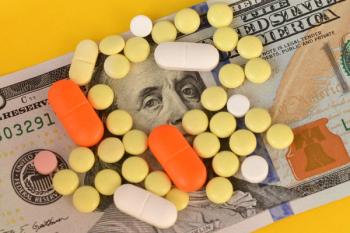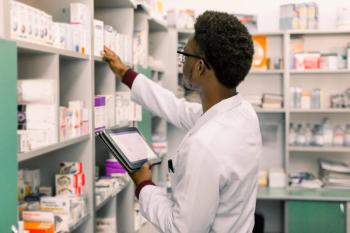
Pharmacy 101: "Could you patent the sun?"
Jonas Salk, Sovaldi, and the slippery slope to perdition.
David StanleyI'm going to show you something this month that I still can't quite wrap my mind around. It will spark memories in some readers old enough to remember fear of swimming pools or a president who had to hide the fact he governed from a wheelchair. In others a bit younger it might, as it did in me, spark a moment of disbelief. I'm going to show you how the United States has completely changed in less than the span of a human lifetime, using only five words: “Could you patent the sun?”
For the greater good
Those words were part of the answer given by Jonas Salk on the day his polio vaccine was declared safe and effective, when he was asked on national television who owned its patent.
A patent was never issued for the vaccine that stopped the virus that paralyzed up to 20,000 children a year. Lawyers for the National Foundation for Infantile Paralysis (later known as the March of Dimes) did consider the possibility of filing for one - perhaps, as Slate magazine suggested in April of this year, only to keep unlicensed, low-quality versions off the market, rather than with the intent of profiting from the product.
For greater profits
“Could you patent the sun?”
Compare that simple sentence to: “Sovaldi reduces total treatment costs for HCV - taking into account the cost of medications (including those for side effects or complications) and healthcare visits - and it represents a finite cure, an important point to consider when comparing the price of a pill or bottle to the lifetime costs of treating a chronic disease.”
All of that is part of a statement in which the manufacturer of Sovaldi, a breakthrough treatment for hepatitis C, endeavors to justify its cost of $1,000 a pill.
That wasn't a typo. Every prescription written for Sovaldi will come with a price tag of around $84,000. Setting aside the manufacturer’s claims of potential savings, to treat each of the three million Americans infected with hepatitis C at that price would cost over $250 billion dollars, almost as much as we annually spend today on all medications combined.
Like it or not, we'll all be chipping in. It is estimated that this drug alone will lead to an 8% increase in Medicare Part D premiums.
And this is accepted now. Less than a lifetime ago, it was accepted that there were things more important than a dollar.
That was then
An article posted at the website of Forbes magazine estimated that when Dr. Salk chose not to fight for a patent for his vaccine, he passed on a possible $7 billion jackpot. Today, it is projected that California could end up spending more money purchasing Solvaldi for its Medicaid patients than it does running the state's entire K-12 education system.
Even if someone takes the manufacturer's arguments seriously and accepts that the projected cost savings represented by a cure for the disease justifies an astronomical price, that would mean, as Dr. Steve Miller wrote in Forbes, that “[f]ollowing that logic, all antibiotics have been vastly underpriced since the introduction of penicillin some 60 years ago.”
Of course, penicillin, too, was a product of an era when society as a whole took pride in our nation’s accomplishments, and benefits to society counted for more than maximizing returns to stockholders at the expense of everyone else. That was then.
This is now
Things are different now. And the question arises, how many children are going to try to learn in substandard classrooms because states can't afford to give them adequate schools after paying the bill for Sovaldi?
It would be ironic if the next Sovaldi-style breakthrough never happens because states struggling to pay for the last breakthrough put the next Jonas Salk in an overcrowded science class refereed by an overworked, underpaid biology teacher.
And here’s another question plenty of folks can relate to: How many seniors might be tempted to pass on Part D coverage when faced with an increase in premiums they can't afford?
The prospect of older Americans, born into the world of Dr. Salk and dying because they can no longer afford the prescription coverage kicked up by Sovaldi prices, adds to the black irony here as well.
David Stanley is a pharmacy owner, blogger, and professional writer in northern California. E-mail him at
Newsletter
Pharmacy practice is always changing. Stay ahead of the curve with the Drug Topics newsletter and get the latest drug information, industry trends, and patient care tips.





























































































































